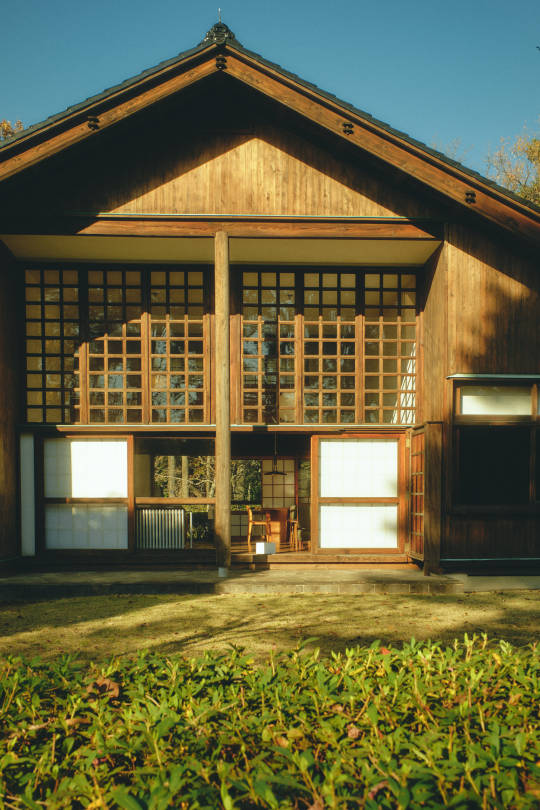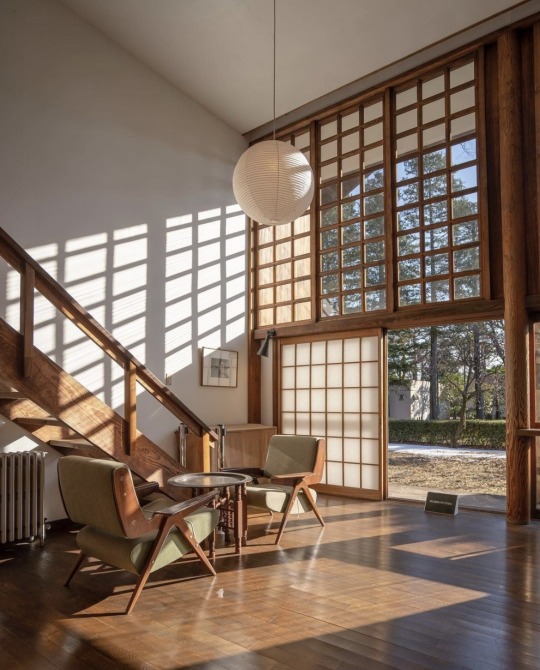#kunio maekawa
Photo
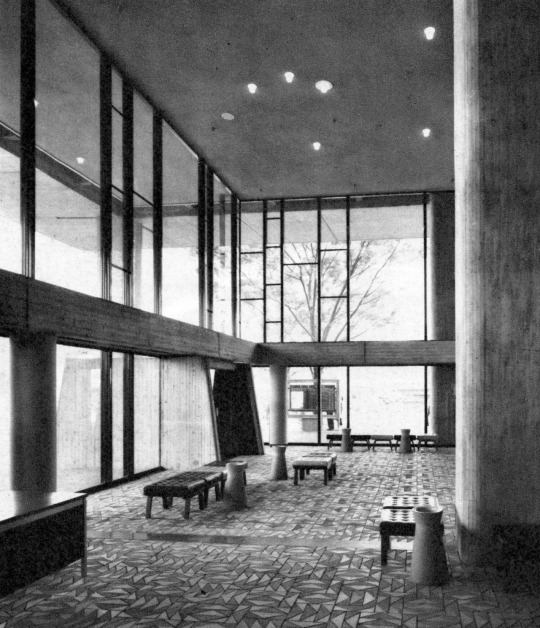
Inside Tokyo Metropolitan Festival Hall, Kunio Maekawa, Tokyo, Japan, 1961
113 notes
·
View notes
Text


Despite being named the father of Japanese modern architecture, Kunio Maekawa (1905-86) never quite received the same amount of global attention as e.g. Kenzo Tange did. The 117th issue of JA The Japan Architect with a fabulous retrospective of 22 key works ranging from his Kimura Industrial Laboratory from the early 1930s to the Hirosaki Municipal Crematorium provides ample input for a reevaluation of Maekawa’s contribution to Japanese architecture.
The introduction to the issue is a very insightful conversation between editor Hera van Sande and Hiroshi Matsukama who has been with the Maekawa office since 1980 and who sheds light on the master’s character, working method, design philosophy and the importance of Le Corbusier for Maekawa (Maekawa spent two years in the office of LC). The latter aspect is further elaborated by Van Sande in her essay about Le Corbusier and Maekawa which provides additional insights into the long-lasting influence LC exerted on Maekawa. In this context it should also be noted that Antonin Raymond, with whom Maekawa collaborated after his return to Japan in 1930, was an equally important influence and a catalyst for Maekawa to rekindle with traditional Japanese architecture.
Through the dense presentation of the architect’s life and works, projects, texts and plans JA 117 is an eye-opening read and warmly recommended to anyone wanting to get to know and understand the work of a Japanese modern master.
#kunio maekawa#the japan architect#monograph#architecture#japan#architecture book#architectural history#book
49 notes
·
View notes
Text
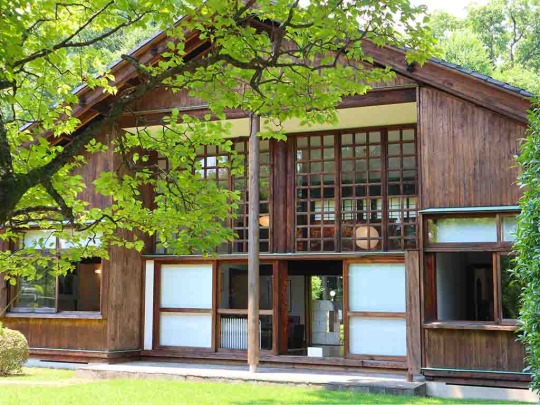



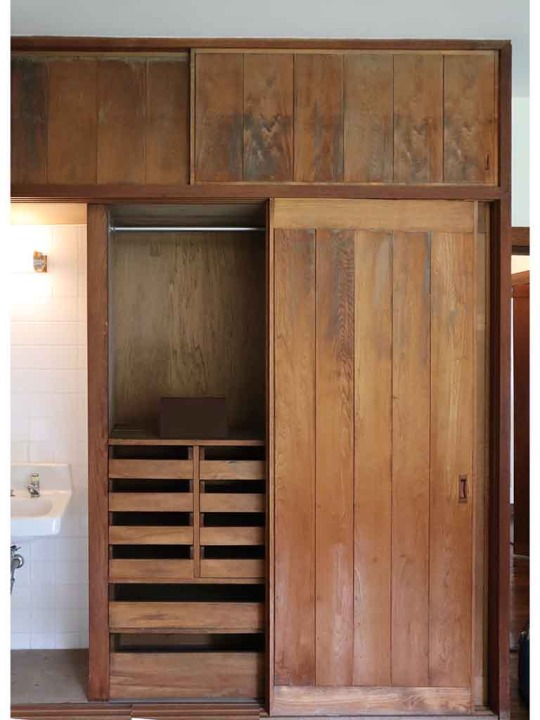

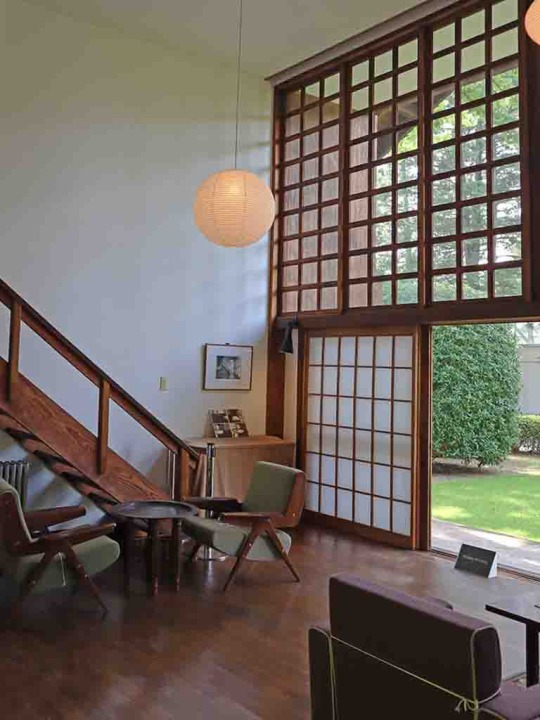
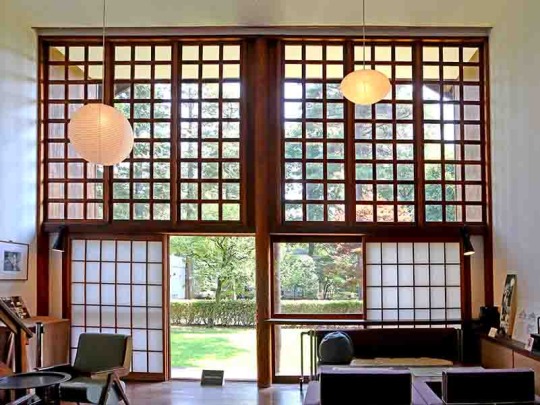

The Maekawa House
Architect Kunio Maekawa (1905-1986)
Built in 1942 in central Tokyo in the wake of WWII
#architecture#interiors#exterior#wood interior#japanese art#japanese architecture#japan architecture#modern architecture#kunio maekawa#Maekawa house
17 notes
·
View notes
Text

(https://www.machinaka-sansou.com/1674/%E5%89%8D%E5%B7%9D%E5%9C%8B%E7%94%B7%E8%87%AA%E9%82%B8%EF%BC%88%E5%9B%9E%E9%A1%A7%E9%8C%B2%EF%BC%89/)
Kunio Maekawa House
0 notes
Text
Kengo Kuma gebruikt opvallende materialen
Kengo Kuma (1954) is een van de meest geprezen Japanse architecten. Zijn firma heeft kantoren in Tokio en Parijs. Hij is wereldberoemd om zijn vermogen om architectuur, natuur ensociale verantwoordelijkheid samen te voegen.
Sinds de oprichting van Kengo Kuma en medewerkers (1990) heeft hij projecten voltooid in meer dan 20 landen over de hele wereld, en gedurende zijn carrière heeft hij een…

View On WordPress
#20-ste en 21-ste eeuws#aard van de plek#architect#architectuur#gebouw#Japan#Kisho Kurokawa#Kunio Maekawa#licht#lichtheid#materialen#menselijke maat#modern#natuur#omgeving#portfolio#professor#projecten#ruimte#sociale verantwoordelijkheid#technologie#Vader#zachtheid
1 note
·
View note
Text
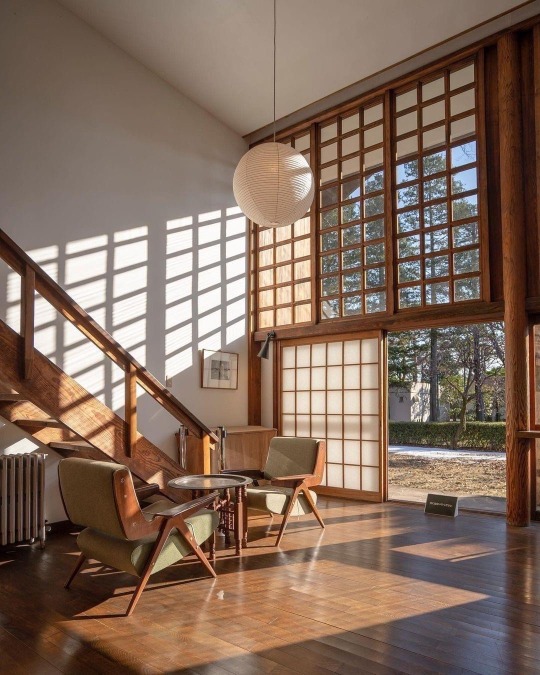
1 note
·
View note
Video
有孔煉瓦 / hollow brick by kazu saito
Via Flickr:
神奈川県立図書館旧本館の外壁
#有孔煉瓦#外壁#神奈川県立図書館#旧本館#採光#前川國男#hollow brick#outer wall#kanagawa prefectural library#library#lighting#maekawa kunio#building#architecture#建築#flickr
0 notes
Text
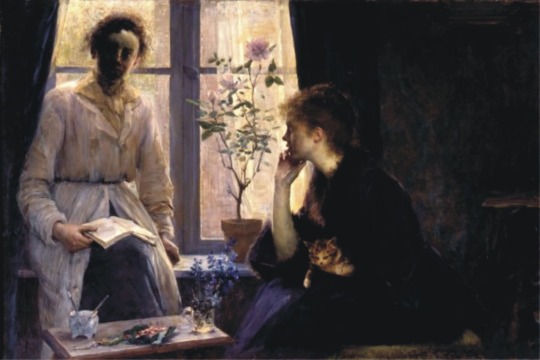

Louise Catherine Breslau - Contre-jour (1887)
Madeleine Zillhardt (June 10, 1863 in Saint-Quentin, France – April 16, 1950 in Neuilly-sur-Seine, France) was a French artist, writer, decorator and painter. Her life and her career are linked to another artist, the German-Swiss painter Louise Catherine Breslau, of whom she was the companion, the muse and the inspirer. They lived together for more than forty years, a life turned towards arts.
In 1884. Zillhardt asked Breslau to make her portrait. They would not leave each other and moved permanently together in 1886. In 1887, Breslau performs 'Contre Jour', one of her masterpieces, representing the couple she formed with Zillhardt in their intimacy. The painting was bought by the Swiss government in 1896, and is today held by the Museum of Fine Arts Bern.
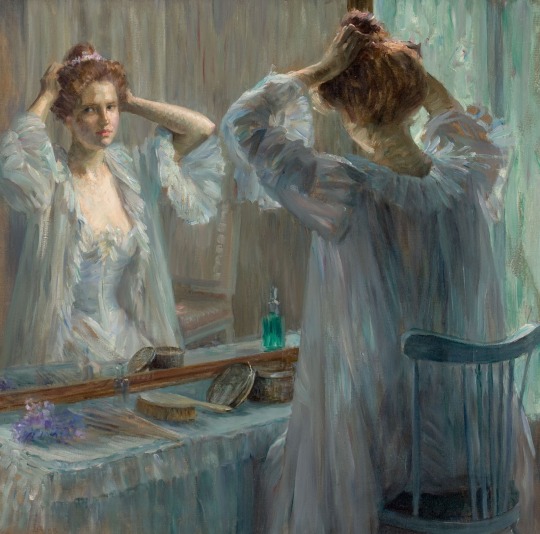
Louise Catherine Breslau - La Toilette (Madeleine Zillhardt), 1898
In 1928, Zillhardt bought the concrete barge 'Liège' in Paris in order to make it available to the Salvation Army. With the support of Winnaretta Singer, princesse de Polignac and heiress of the company of sewing machines Singer, the barge was rehabilitated by Le Corbusier in 1929, with his student, Japonese architect Kunio Maekawa. According to the will of Madeleine Zillhardt, the boat took the name Louise-Catherine in tribute to Breslau and became a refuge for the homeless in winter and a summer camp for children, moored in Paris on the banks of the Seine, at the Pont des Arts and at the Pont d'Austerlitz. (source)
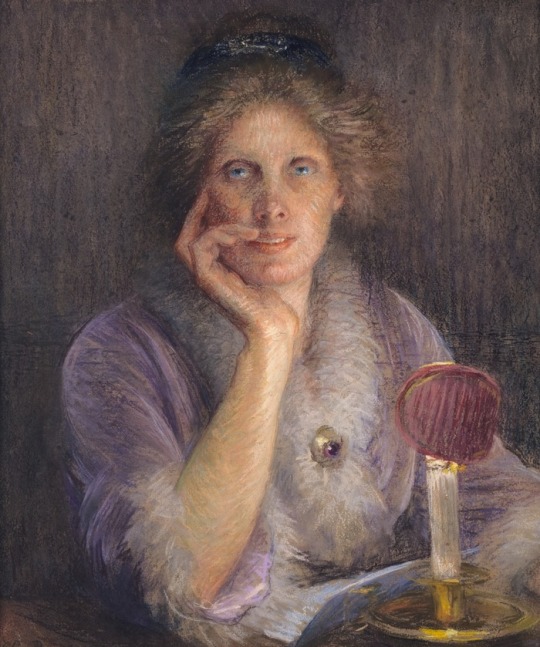

Louise C. Breslau, Sous la lampe. Portrait de Madeleine Zillhardt || Louise Breslau, Self portrait (1891)
73 notes
·
View notes
Text
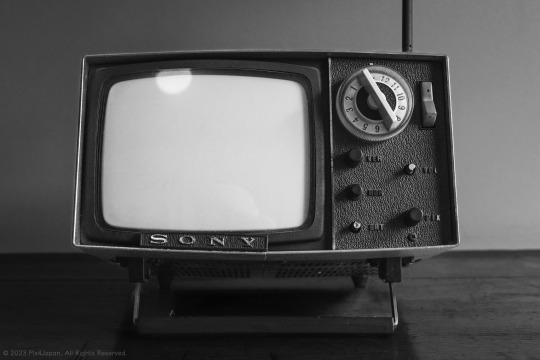
1960s Portable Sony TV was a Hit with Showa Emperor and Frank Sinatra!
Location: Edo-Tokyo Open Air Architectural Museum, Koganei, Tokyo
Timestamp: 13:28 on October 25, 2023
Pentax K-1 II + DFA 28-105mm F3.5-5.6
45 mm ISO 800 for 1/50 sec. at ƒ/9.0
Sony unveiled its 5-inch portable TV, the Micro-TV (Model #TV5-303), to the world on April 17, 1962, and it hit the U.S. market with a bang on October 4th of the same year. The grand launch took place at Sony’s state-of-the-art New York showroom on Manhattan’s 5th Avenue, with over 400 guests, including the esteemed Consul General of New York.
This incredibly compact micro-television, available in silver and black versions, became an instant sensation. Demand soared to unprecedented levels, leaving Sony struggling to keep pace. Despite shipping sets by sea straight from the assembly line, the company couldn’t meet the eager market's needs.
With rival manufacturers hot on their heels, Sony took a bold step by chartering a Pan American airliner to expedite the TVs to the U.S., capitalizing on the momentum they had generated.
It wasn't only six months later in early 1963 that Hayakawa Electric introduced similar portable televisions to the U.S. market, trailing behind Sony's groundbreaking Micro-TV.
During a factory tour in March 1962, the Showa Emperor and Empress of Japan received an exclusive preview of the Micro-TV. Sony's co-founders, Akio Morita and Masaru Ibuka, went to great lengths, requesting Their Imperial Majesties to maintain strict confidentiality regarding the yet-to-be-announced Micro-TV.
This act of secrecy mirrors the practices of today's tech giants like Google and Apple. However, this request sparked controversy, leading to sensational headlines in Japan's major weeklies, including articles with headlines such as "Emperor is Hushed Up!" These weekly publications (週刊誌), often regarded more as politically provocative tabloids than bastions of high journalistic standards, may have inadvertently amplified the buzz surrounding the Micro-TV.
Adding to the Micro-TV's allure was a surprise admirer – the legendary Frank Sinatra. After being given a sneak peek in April 1962, Sinatra was so captivated by the TV5-303 that he expressed a desire to take one back to the States. Acknowledging the limitations of the Japanese model in picking up U.S. channels, Morita pledged to deliver a U.S. spec model to Sinatra as soon as they were available.
True to his word, Morita personally delivered the television to Sinatra at Paramount Pictures in October, the day after the sets went on sale, fulfilling his promise and cementing the Micro-TV's status as a technological marvel of its time.
My photo of the Sony TV5-303 Mini-TV can be seen on display in the “House of Kunio Maekawa,” which is just one of the many vintage and preserved structures on display at the Edo-Tokyo Open Air Architectural Museum in Tokyo.
The Pix4Japan blog post includes Google Maps links and links to all of the original source material available for further reading: https://www.pix4japan.com/blog/20231025-edo-bldg-museum
#静物写真#ソニーマイクロテレビ#江戸東京たてもの園#東京#pix4japan#pentax_dfa28105#pentaxk1mkii#still life photography#Japan#Tokyo#Sony Micro-TV#Edo-Tokyo Open Air Architectual Museum
10 notes
·
View notes
Photo

Lounge Chair is a minimal chair created by Japan-based designer Koichi Futatsumata. The Kanagawa Prefectural Library, designed by Kunio Maekawa and opened in 1954, has unveiled new lounge chairs for its main building that pay tribute to the old library. These chairs, designed to be “a chair for relaxing and reading,” have a playful design that is meant to encourage leisurely reading.
21 notes
·
View notes
Photo

midmod.mood
Maekawa House by Kunio Maekawa, circa 1942 via
@kwri_photo
10 notes
·
View notes
Text

(https://www.machinaka-sansou.com/1674/%E5%89%8D%E5%B7%9D%E5%9C%8B%E7%94%B7%E8%87%AA%E9%82%B8%EF%BC%88%E5%9B%9E%E9%A1%A7%E9%8C%B2%EF%BC%89/)
Kunio Maekawa House (detail)
0 notes


